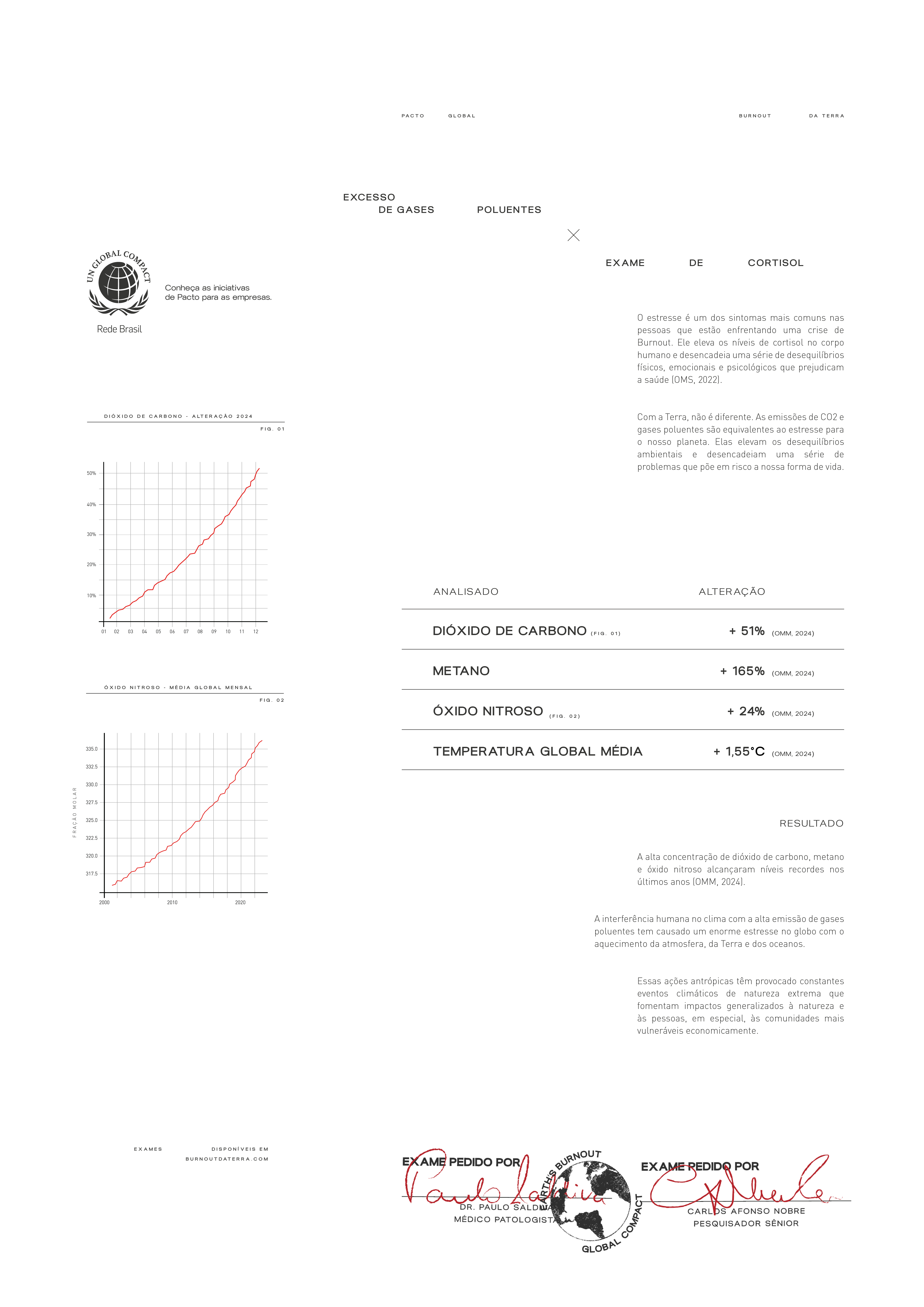studies collection
The first step was to analyze our planet's symptoms. We collected an array of articles and scientific studies that demonstrate every environmental issue the Earth is dealing with. During this stage of the research, we had help from activist and environmental manager Sidney Marcelino Leite.
Then it came time to correlate the Earth's symptoms to those of a human being. Each environmental problem the planet is dealing with can easily be linked to a problem that patients with burnout experience. That allowed us to arrive at the symbolic diagnosis that the Earth is burned out.
Throughout the research process, and in order to arrive at our diagnosis, we got help from two specialists: climate scientist Dr. Carlos Nobre and pathologist Dr. Paulo Saldiva.
The solution for the Earth’s problems is the same treatment recommended for patients with burnout: rest. That’s why we came up with a symbolic doctor’s note, signed by both doctors, requesting the immediate suspension of activities on Earth. We sent the note to several companies, asking that they sign the Global Compact and give the planet some time to recover.
















